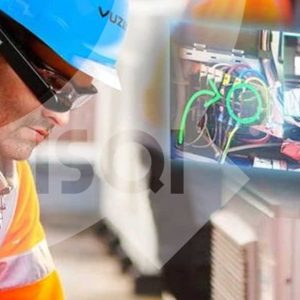The domestic, commercial and public sector is known as one of the main final consumers of all types of energy carriers, accounting for more than 40% of the country’s total energy consumption. The increasing growth of energy consumption in this sector and the continuation of the current trend of excessive energy consumption in different sectors, increasing energy efficiency and reducing losses in a building requires the control of different stages, including the heating or cooling energy generation stage, the transmission stage, and the distribution stage. And the consumption is in the final equipment, and in fact, the total efficiency is obtained from the product of the efficiency of each of these stages in each other. Therefore, reducing the efficiency of each of these steps will lead to reducing the overall efficiency.
In many cases, in residential buildings, central heating system is used to generate heating energy. Fortunately, in our country, measures such as the use of double-glazed windows, radiator thermostatic valves, intelligent control of the engine room, insulation of walls and pipes, etc., have led to a significant reduction in energy losses in the transition stages until the final energy consumption in a building. . Unfortunately, no effective measures have been taken so far in engine rooms and especially its combustion system (boiler, burner and chimney).
One of the effective measures in the direction of changing approaches in energy consumption is the implementation of the technical inspection plan for residential, administrative, commercial and service engine rooms based on the national standard 16000 in buildings.
The national standard 16000 was prepared as a necessary step to audit, optimize and reduce the problems of engine houses and reduce fuel consumption and environmental pollutants and includes various steps such as “complete inspection of the engine house building and its components and adjustment of engine house information”, “analysis of exhaust combustion products” of the chimney with a gas analyzer and comparing it with the standard”, “precise adjustment of the burner in order to reduce fuel consumption and air polluting gases”, “measuring and balancing the suction power of the chimney in order to increase the efficiency of the boiler”, “preparing a report on engine room problems and the components mentioned in this standard and solutions” and “submitting the inspection report and periodic technical examination of the engine room to the relevant organization”.
The purpose of developing the national standard 16000 is to determine the method of technical examination (periodic inspection and optimization of energy consumption) of hot water and hot water engines for heating installations and providing hot water for building consumption. (in order to reduce air pollution and improve the level of health, safety and well-being of residents, save energy consumption, help to implement the rules and standards related to energy consumption in all buildings of the country)
This instruction applies to engines that work with natural gas and diesel.
This instruction does not apply to engine houses in which steam boilers or direct flame absorption chiller systems are used.
Hot water and hot water engines for heating facilities and providing hot water for buildings must be technically inspected at least twice a year.
In this plan, by improving the performance of the energy generating system, while improving the efficiency of the system, the amount of polluting gases coming out of the chimneys will be reduced to a great extent.
A reduction of at least 20 to 30 percent in energy consumption and more than 70 percent in the emission of polluting gases (especially carbon monoxide) are expected achievements from the implementation of this large national plan.
According to this instruction, the technical team goes to the engine houses and after registering the technical specifications, using the gas analysis device, they adjust the burner in such a way that by being in the optimal range of the combustion parameters, including the percentage of excess air, Carbon monoxide and … fuel consumption of burners should be as low as possible. By applying the optimal point in boiler combustion and recalculations, it was possible to prove three research hypotheses as follows.
- Fuel consumption management increases boiler efficiency.
- Fuel consumption management reduces fuel consumption.
- Fuel consumption management reduces pollutants.
Non-observance of standards in the engine house building, improper arrangement of equipment, improper operation of equipment and lack of timely service, and most importantly, the lack of adjustment of the burner and improper suction of the chimney in the investigated engine houses are among the factors that lead to excessive fuel consumption in this The engine houses are moving.
1- The steps and method of performing periodic technical inspection of the engine room in Iran’s quality and standard inspection company
1-1 Steps of technical inspection of engine room rounds
The periodic technical inspection steps of the engine room should be carried out as follows to determine the limits of pollution and optimize fuel consumption in the engine room.
1) The building manager should be approached to introduce the inspection group and a work plan should be presented.
2) Go to the engine room together with the engine room manager.
3) The burner and pumps are turned on by the engine room manager and the initial condition is determined. After making sure it is safe
Burner and pumps start working.
4) Other uses should be cut off as much as possible and the meter number should be read.
5) The number of boiler and pump thermostats should be recorded.
6) According to Annex “3”, the place of measurement of combustion products is determined on the chimney and is equal to the diameter of the probe.
Combustion product analysis device should create a hole in it.
7) Measure the concentration of combustion products by the combustion products analysis device.
Reminder: In engine rooms where diesel burners are used, in addition to measuring the concentration of combustion products, smoke analysis should also be performed according to the national standard 7594.
8) By setting the boiler thermostat at the appropriate temperature, ensure that it does not shut down during gas flow measurement. Two methods are suggested to measure the gas flow rate entering the burner:
– Removing other gas uses from the circuit, reading the meter for 3 minutes and calculating the flow of gas entering the burner.
– Measuring the pressure at both ends of the valve or governor and calculating the passing gas flow according to the characteristic diagram of the valve or governor.
Reminder: If the burner has been turned off for a long time and the temperature of the water inside the boiler is lower than the usual temperature, it is necessary to turn on the burner long enough for the water to heat up and reach a temperature of at least 60 degrees, then step 8 should be performed.
9) Initial analysis of combustion, suction and flow of gas entering the burner should be recorded in the technical certificate (refer to Appendix A of the standard).
10) Calculate the initial nominal capacity of the burner.
Reminder: In engine houses where diesel burners are used, if possible, the nominal capacity of the burner should be calculated by measuring the flow rate of fuel consumption.
11) Determine the boiler capacity.
12) Determine the optimal nominal capacity of the burner.
13) The rate of consumption of gas/diesel should be determined in the optimal state.
14) Check the state of sealing or leakage of the boiler and correct it if possible.
15) Other holes (such as around the place where the burner is installed) with aluminum glue or pot paste if possible.
be sealed
16) It is recommended to install a suitable damper on the chimney if possible.
17) It is recommended to replace a part of the chimney with the coordination of the engine room manager.
be done.
18) If the chimney suction was positive or zero, by reviewing it (or taking the suction) in the off state, make sure that the chimney path is not blocked.
19) Review the fuel line and determine its problems.
20) The filter should be reviewed.
21) The torch should be serviced. Mashal service includes at least the following:
A – Opening the main cover, cleaning the fan and air pressure sensor tube
B- Revision of the igniter and the flame ion and, if necessary, replace it with the agreement of the facilities manager
C- Reviewing the flame cover and flame spreader and adjusting it if needed
Reminder: In engine houses where diesel burners are used, the operation of the diesel pump and nozzle should be checked visually.
22) Inspection of leaks and correct installation of the torch in its place.
23) in order to create a relative match between the capacity of the boiler and the burner, by comparing the initial consumption of gas and the consumption
When the optimum is obtained, the amount of gas input to the burner should be proportionally reduced or increased.
24) In this case, the flame does not touch the bottom of the pot and even covers 80% of the length of the pot as much as possible.
25) After the initial adjustment of the gas/diesel flow rate, the air valve should be adjusted so that the amount of CO is within the standard range (according to the performance requirements provided in paragraph 5 of the standard) and the additional air is as small as possible (it is recommended that this amount be less than 30%).
26) If it is not possible to reach this point by adjusting the burner air valve, it can be done by gradually reducing and
A little bit of gas/diesel flow and changing the air valve moved to the desired point.
27) If it was not possible to reach this point at lower capacities, gradually increase the capacity to reach the desired point. In this case, it should be noted that the flame should not hit the end of the pot.
28) After reaching the desired point, record the analysis results and turn off the burner.
29) Read and record the meter number.
30) After collecting all the equipment and finishing the work, the completed technical certificate (Appendix A of National Standard 16000) should be signed by the manager of the engine house.
31) Leave the engine room and refer to the building manager (if the responsibility of the engine room is not with the building manager) together with the manager of the engine room, sign the technical certificate (Appendix A of National Standard 16000) and complete the final approval.







